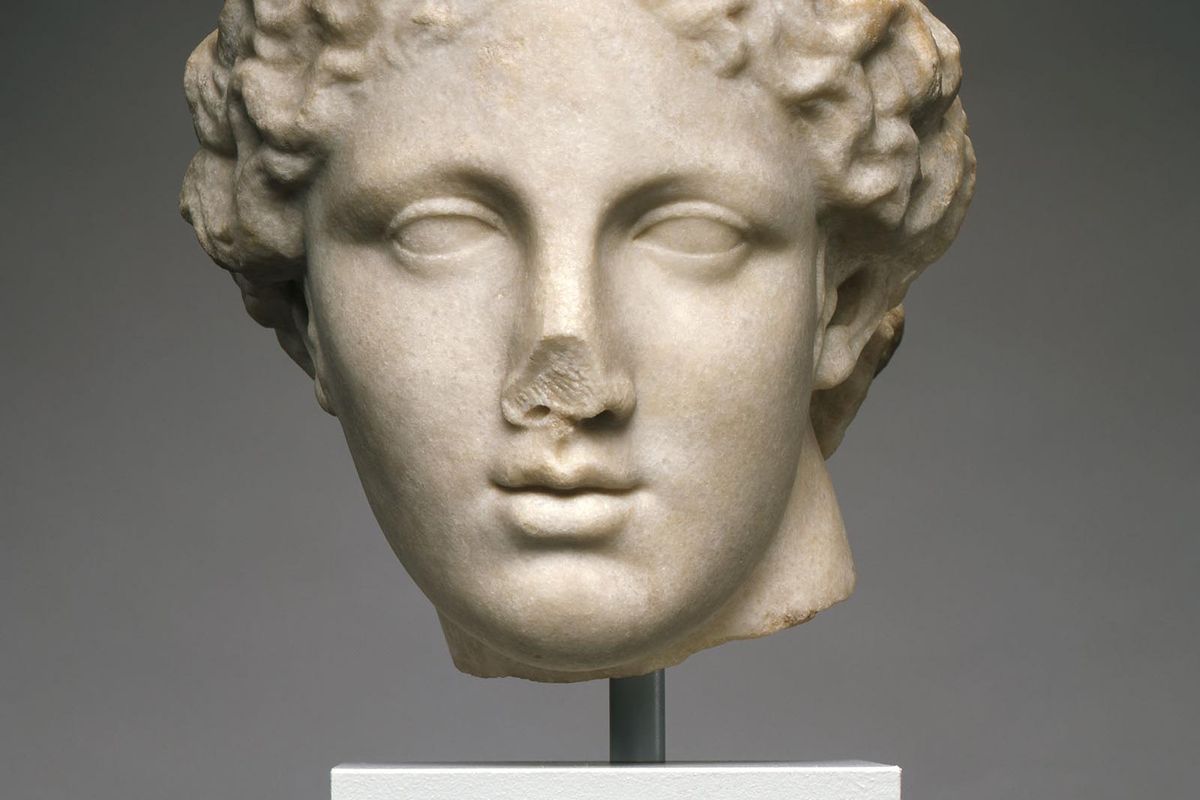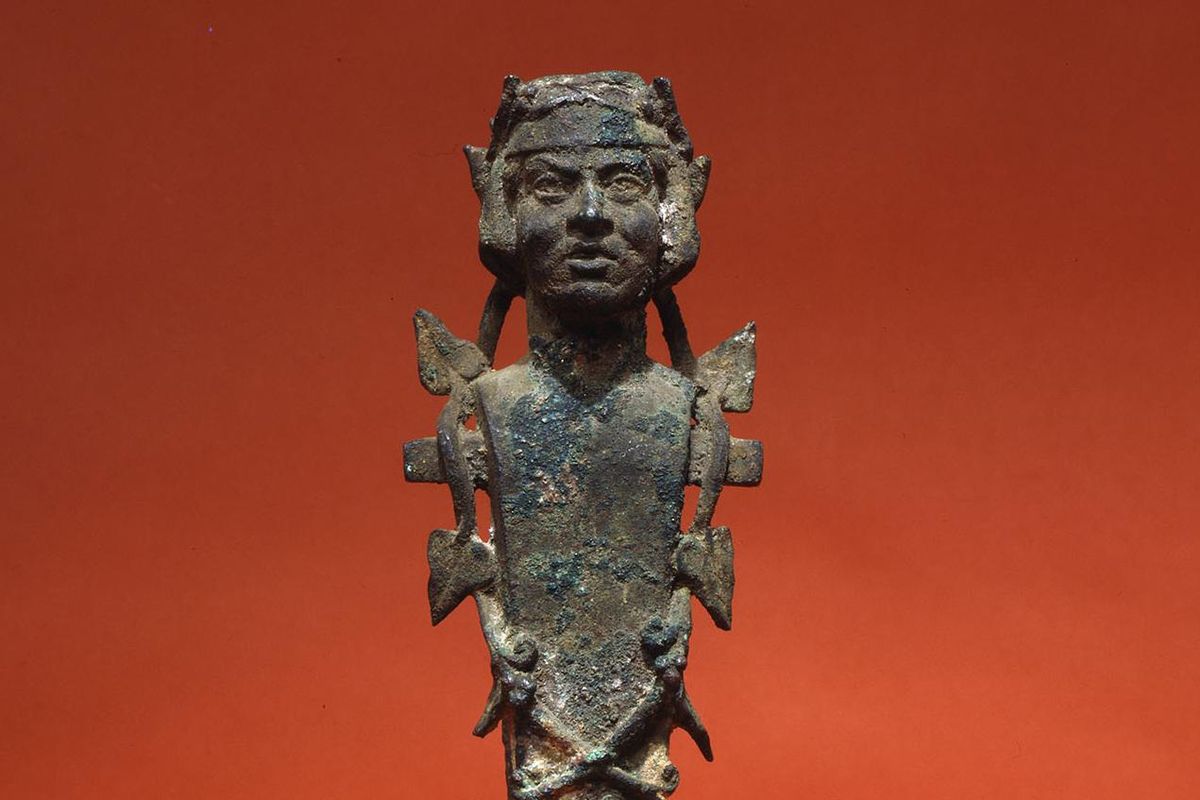Everyday objects lend insight into ancient Roman culture at Jundt
Aphrodite, circa first centuries B.C.-A.D. Marble, 11 7/16 x 10 inches. Greco-Roman. Lent by the Michael C. Carlos Museum, Emory University, Carlos Collection of Ancient Art. (Bruce M. White / Michael C. Carlos Museum, Emory University)
Many of the objects are small. Like dime-size, or smaller.
Which is appropriate given that many of them are coins – ancient coins that date back to the 200s B.C. There are also medallions and lamps, statuary and lithographs. Displayed together, as they are in the main gallery of the Jundt Art Museum on the Gonzaga University campus, they help tell the story of Rome. That story specifically centers on Roman myth, and how ancient Rome perpetuated its culture and beliefs through the objects it created and used every day.
“This is the first time there’s been a show like this in the Spokane area in a couple of decades,” said Andrew Goldman, a history professor at Gonzaga University who excavates Roman sites in Turkey. The show features about 120 ancient objects from three major institutions on the East Coast: University of Pennsylvania, Emory University in Georgia and the American Numismatic Society in New York City. There are a few pieces from the Jundt’s collection, and a glass flask that dates back to between A.D. 1 and 199 from the Gonzaga University Archives and Special Collections.
Goldman said he’d wanted to do an exhibition of ancient Roman artifacts for years, so he and museum director Paul Manoguerra began working to put it together a couple of years ago. The decision to settle on Roman myth as it pertains to ancient objects came about during a conversation between the two of them.
“We played around with a lot of topics. We thought what are some the major issues that people are discussing nowadays,” Goldman said. “They’re discussing questions of identity. People are discussing questions about American history, about the founding fathers, and so the show really deals with some parallel issues. …
“The Romans, like the United States, are pretty new kids on the block,” he added. America, for instance, has always kept an eye on the trends in Europe, and Goldman pointed out that the robber barons of the 1890s filled their mansions with European art and artifacts. “The Romans are surrounded by older cultures. It’s a small city-state, but it’s growing by leaps and bounds. They have no real official history. Looking at these civilizations like the Greeks, who have Troy and these great stories of Homer, and the Romans have nothing comparable. So they begin to develop their own sense of who they are and their own mythology.”
The exhibit features original Roman objects, some now-antique reproductions of Roman designs, and only one replica – of a household shrine called a lararium. Created by art handler/preparer Robin Dare, the lararium is a reproduction of one from Pompeii, and it serves to house four ancient objects: a glass flask said to come from Pompeii, statuettes of Venus and Pan that date from 27 B.C. to A.D. 395 and a bronze lamp from 1903 with an image of the Greek god Silenus. “It was an opportunity to show some of the objects in context,” Manoguerra said.
Not all the pieces in the exhibit are ancient. There’s an Andy Warhol print. The final piece of the exhibit examines how Roman myth, history and culture have continued to capture the imaginations of artists. Here, museum visitors can see Warhol’s “Vesuvius #14,” an offset lithograph on paper from 1985, an original movie poster for the 1960 Stanley Kubrick film “Spartacus,” and a lithograph of the Leonard Baskin drawing “Aeneas Carrying His Father from the Ruins of Troy” from 1971. There’s Italian money with images of Romulus and Remus from 1938. A cameo with Medusa, which dates from 1750 to 1850, is displayed alongside a lamp and cameo of Medusa from the first century A.D.
The accompanying lecture series, “Ancient and Modern Perceptions of Roman Myth, Memory and Culture,” continues through Dec. 1. So far, scholars from Gonzaga and beyond – including the University of Oregon, Tulane University, Whitman College and Reed College – have spoken to full houses of audiences from ages 10 to 80, Goldman said. The final lecture will feature Monica Cyrino, a professor at the University of New Mexico, talking on “Rome as Cinematic Myth: Screening a New Spartacus.” For details on the lecture series, visit www.gonzaga.edu/jundt.
This is an atypical exhibition for the Jundt. Unlike a traveling exhibit that comes to a museum as a piece, “Roman Myth” was wholly created by the Jundt primarily from objects on loan from other institutions. Expect to see more of these kinds of exhibits at the Jundt, but not right away.
“This was a medium-sized exhibition executed by a small museum,” Manoguerra said. “It was a big undertaking for a museum our size.”

